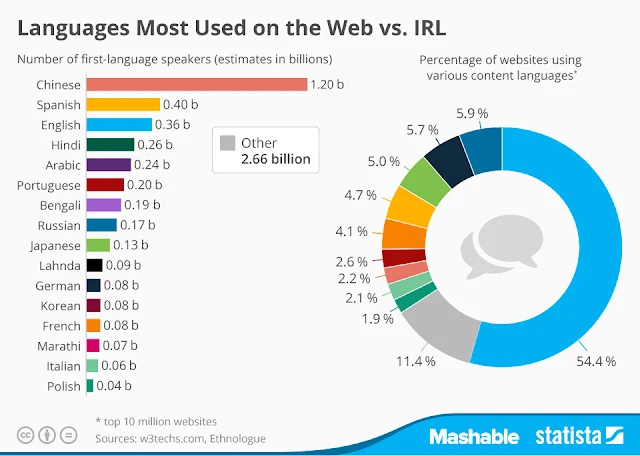Language Diversity, Or Lack Thereof, Is a Major Problem On the Web
 |
| English is strangling other languages on the Internet |
When it comes to Internet
accessibility, having a strong Wi-Fi connection is just the beginning. What's
the use of even the fastest internet speeds if you can't read the words on the
page?
Even if global
access to Internet becomes a reality, language barriers make complete
accessibility an impossibility.
Language diversity, or lack
thereof, is a major problem on the web. Only 5% of the world's 7,100 languages are
accessible on the Internet. Though about 80% of those languages are spoken by
100,000 people or less, this is no doubt a sizable problem when it comes to the
goal of global connectivity.
In a survey of the top 10 million
websites on the web, almost 55% of sites used the English language to deliver
their content.
Yet, only 360 million of the 7
billion people worldwide speak English as a first language. In comparison, 1.2
billion people speak Chinese as a first language — yet, Chinese is only the
main content language of 2.2% of websites. That’s all not to mention Hindi, the
fourth most commonly spoken language globally, which is used by less than 0.1%
of websites.
The lack of language diversity on
the web, according to some activists, is aiding in making lesser known
languages obsolete.
These languages, markers of
culture and identity, are a way to construct a collective sense of belonging,
providing a direct connection to history. When languages die, a part of culture
dies — and preservation of culture is
an important global goal.
The following chart, created by
statistics portal Statista, visualizes
these disparities in language access, showing how languages are represented in
real life versus across the web’s top 10 million most popular sites.
Source: Mashable


Comments
Post a Comment